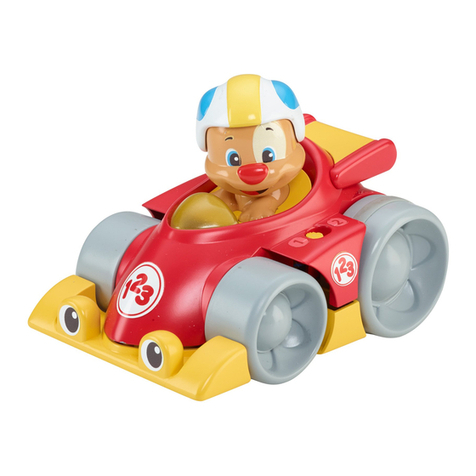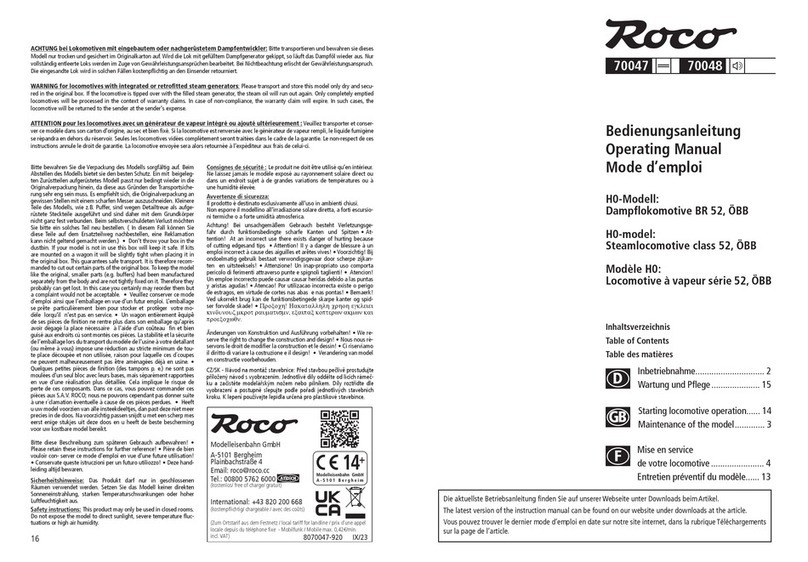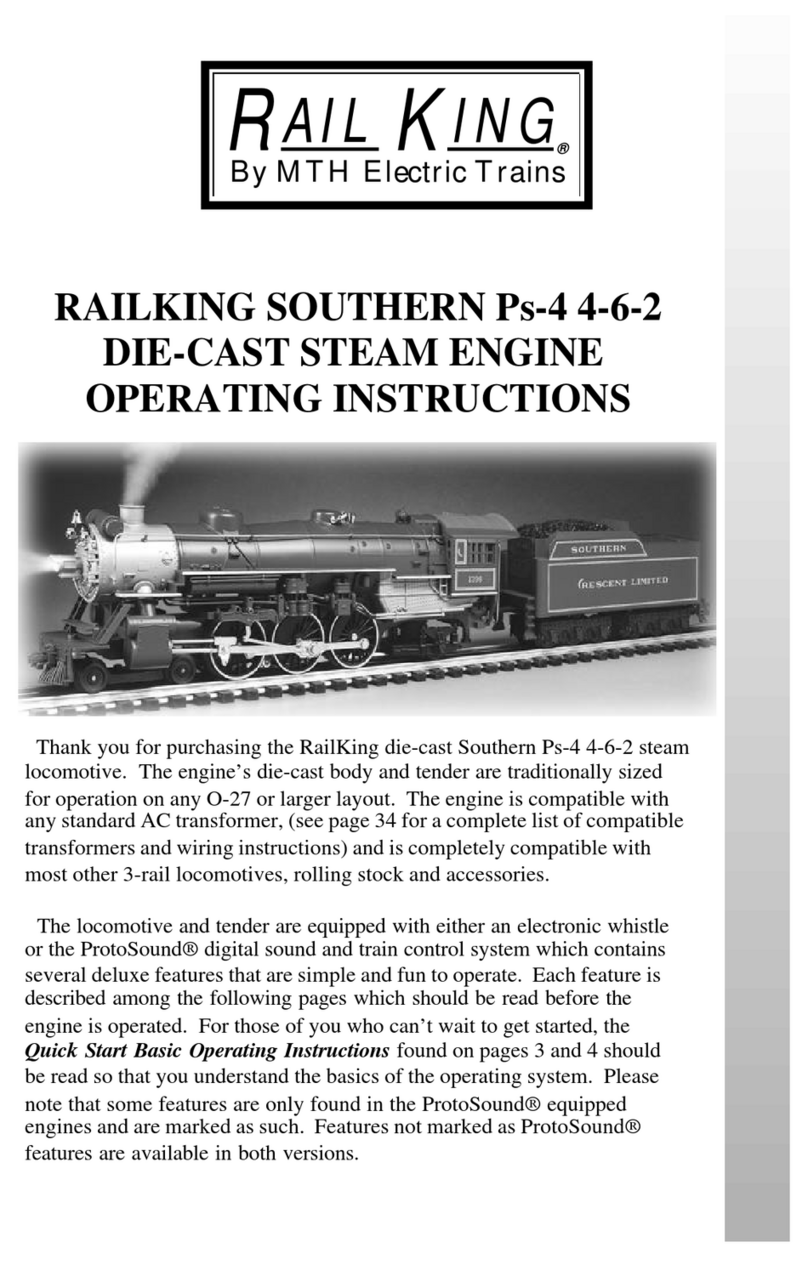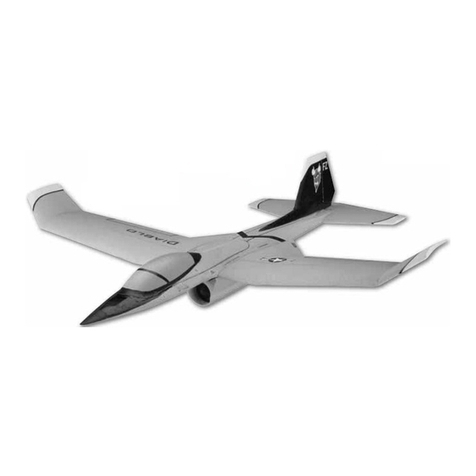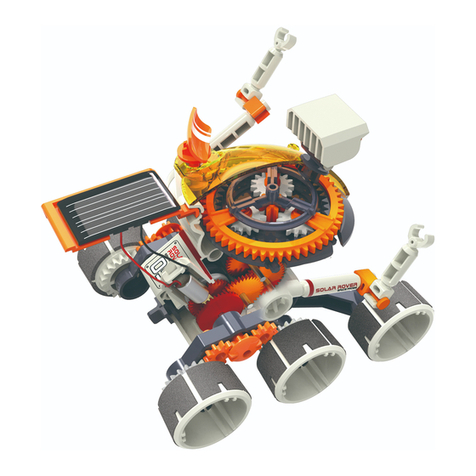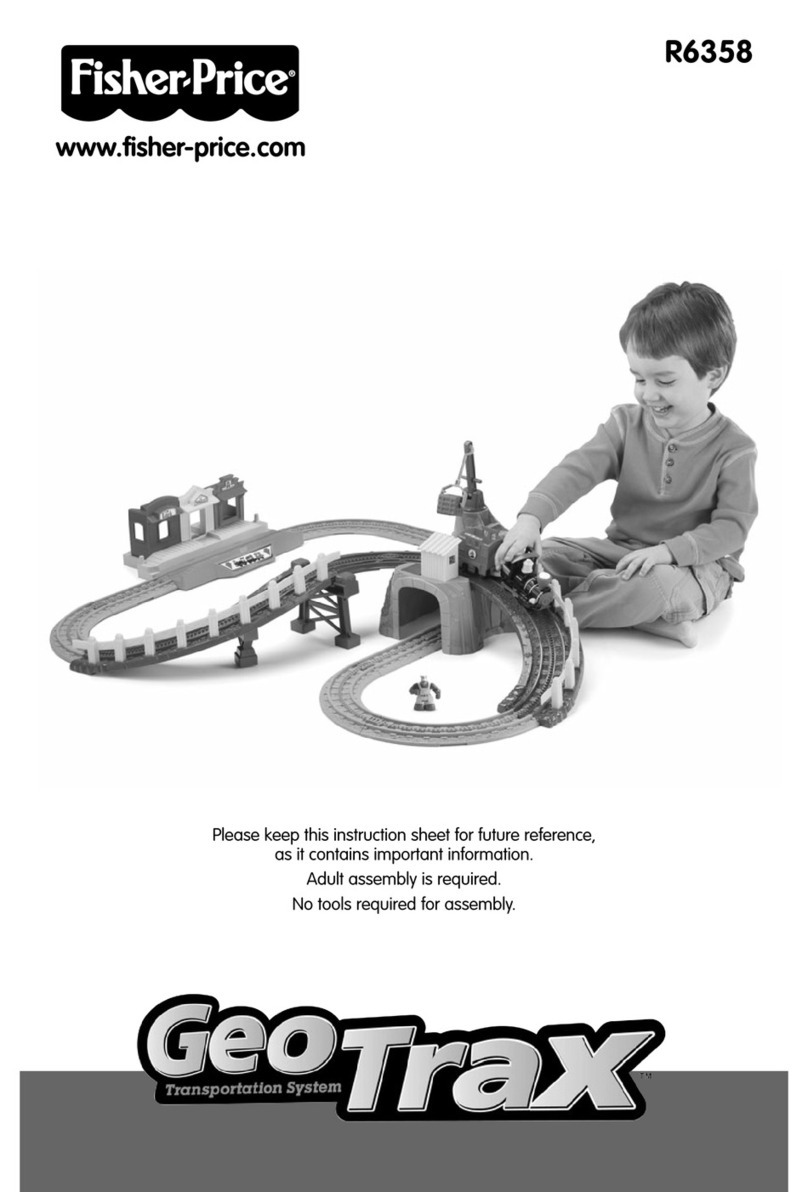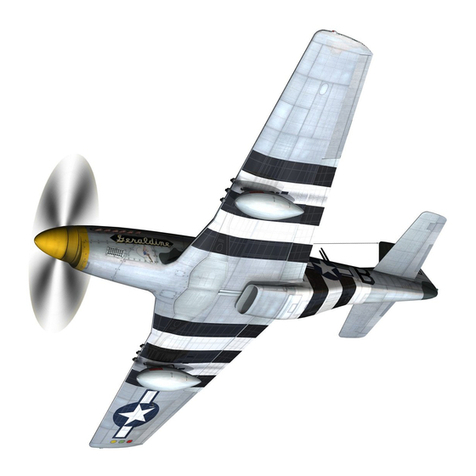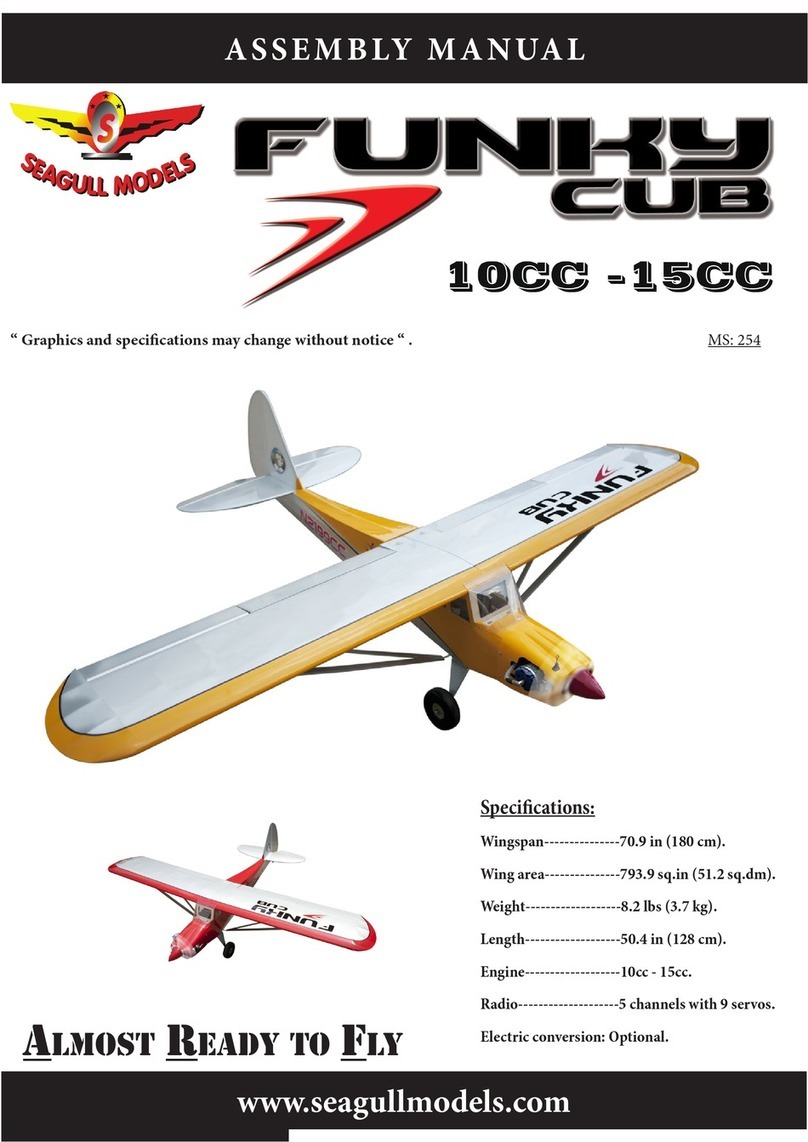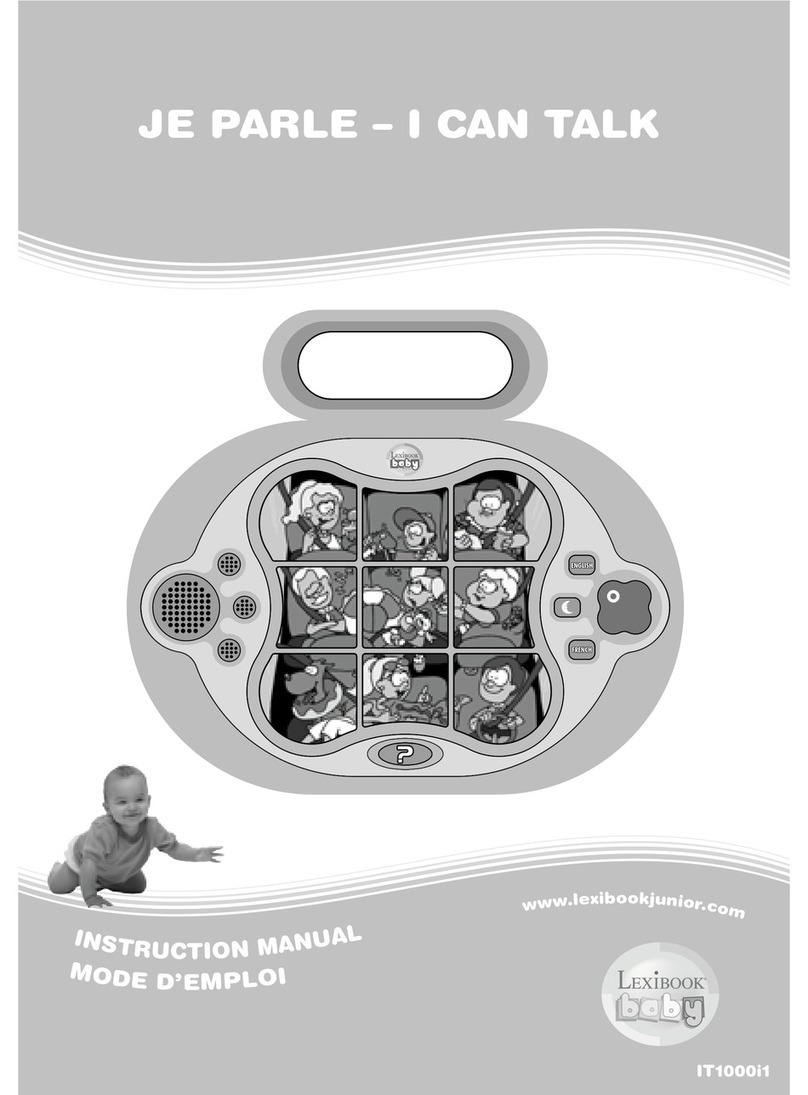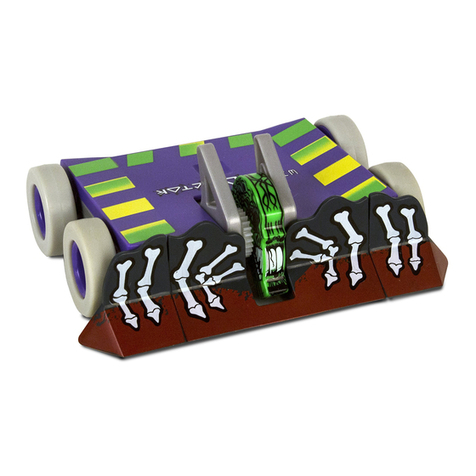
Instructions L1 german new 19112013 Page 2 of 12
Tools and equipment
The following tools - not included in the set -
should be kept on hand for the assembly of this set: Allen key SW
1,5, Needle-tip tweezers, Allen key SW 2,5, Torx keys 6, 8 , 10.
You will also require additional color paint and glue.
Included in the set for kits, you will find: 1 ceramic paste syringe,
1 holder plate for aligning pin, 1 drive punch for releasing the
aligning pin,
1xfluid oil 12, 1 x ball bearing glue Super Glue instant adhesive!
Assembly (front = chimney on the right)
1 - Manually carefully insert a bearing (13) into both sides of the
rocker arm (37). Take the rocker arm axis
(34) and push a locking washer (30) on the short side with
a clearance groove. Drive the rocker arm axis (34)
into the rocker arm (37) through the side of the aluminum case, so
that the
long end of the rocker arm axis (34) protrudes from the rear. Attach
the rocker arm axis (34) to the rocker arm (37) with another locking
washer (30). Here you should observe the fact that
the rocker arm (37) may not be attached tightly onto the rocker arm
axis (34)
between both locking washers (30). Some play should remain (see
Figure 1)
2 - Glue respectively one bearing (13+14) degreased on the outside
in the degreased side part holes (66 + 67) - flush with the outside
(sunken side) - using super glue (73)
(only put a little glue in a circle around the drill hole of theside part).
30 minute curing!! (see Figure 2)
3 - Press in the displacement piston cover (25) into the
displacement piston (24),
then screw into the displacement axis (23) with lacquer / glue on the
thread. Carefully remove any overflowing glue using a cloth, then
let it dry. (see Figure 3)
4 - Insert the sleeve (49) into chamber 1 (38), so that the sleeve (49)
may not fall out. (see Figure 4)
5 - Insert the assembled displacement piston (24) into the chamber 1
(38). If the chamber 1 (38) is held vertically, the displacement piston
(24) should fall in by itself - it should not jam. (see Figure 5)
6 - Place the heating cylinder (47) in the middle of chamber 1 (38)
and attach with the screws (9) 4x. (see Figure 6)
7 - Connect the shorter connecting rod (28) with the crankshaft (27)
using the aligning pin (11), the holding plate (76) and needle-tip
tweezers, then connect to the displacement axle (23) of chamber 1
(38).
PLEASE BE CAREFUL: The slip surface of the displacement axle
(23)
should not be damaged! (see Figure 7)
8 - Insert the piston guide (48) into the large hole of chamber 1 (38)
so that the small outer drill hole of the piston guide (48)
points in the direction of the heating cylinder (47).
Plug the chamber ring 1 (41) onto chamber 1 (38) and screw on
to the upper drill hole of the chamber ring 1 (41) with a screw (6) 1x
in order to properly center and fixate the piston guide (48) into
chamber 1 (38).
Then proceed to screwing in the other screws (4) 8x into
chamber 1 (38). (see Figure 8)
9 - Finally, plug the chamber ring 2 (42) onto
chamber 1 (38) after having driven the crankshaft (27) through.
Then, connect chamber 1 (38) and chamber 2 (39)
using the screws (9) 2x. Take care to not damage the crankshaft
(27) and that the sleeve (49) is located in chamber 1 (38).
(see Figure 9)
10 - Drive the second chamber ring 2 (42) over the crankshaft (27).
Take chamber 3 (40) with the large slot pointing down over the
crankshaft (27) and plug the chamber ring 2 (42) onto it.
Here it is important that you take care to point the sunk sides of
both connecting rods (28/29) of the crankshaft (27) forward!
Now, connect chamber 2 (39) and chamber 3 (40) using the
screws (9) 2x. (see Figure 10)
11 - Lightly screw on the rocker arm plates (71/72) on the right and
left
onto chamber 2 (39) with the screws (4) 4x and make sure the flame
is correctly positioned.
Screw the assembled rocker arm (37) between
both rocker arm plates (71/72) using the screws (4) 2x. It should be
ensured that both rocker arms (37) point upward.
Then, tighten all 6 screws (4). (see Figure 11)
12 - Connect the short connecting rods (26) and the working piston
(22) using the aligning pin (11).
WARNING: The wall thickness of the working piston (22) is very thin,
therefore do not use tweezers - one drill hole is usually smoother
than the other! (see Figure 12)
13 - Drive the previously assembled working piston (22) into the
piston guide (48). It is important that the sunken side of the
connecting rod (26) points forward.
Attach the working piston (22) and attached connecting rod (26)
to the rocker arm (37). Push in a black bearing bush (10) into the
connecting rod (26) from behind and screw in from the front using a
screw (8). Only tighten very lightly using a 3 cNm torque, since
excess torque will crush the black bearing bush (10), leading to
braking and blockage! (see Figure 13)
14 - Insert bearings (12) 6x in chamber 1 (38), chamber 2 (39) and
chamber 3 (40). Make sure that the bearings do not fall out.
Assemble both locking washers (30) with both belt pulley axes (31).
The first assembled belt pulley axle (31) goes into the bearing (12)
on chamber 1 (38) from behind.
The belt pulley wheel (44) is assembled onto the belt pulley axle (31)
that points outward to the front using a screw (3). There should be a
spacing of 0,2mm between the front bearing (12) and the belt pulley
wheel 1 (44) (this corresponds to 2 sheets of paper).
The second assembled belt pulley axle (31) is inserted in the bearing
(12) on chamber 2 (39) from the rear.
The belt pulley wheel 2 (45) is attached to the belt pulley axle (31)
that protrudes
towards the front using a screw (3). There should be a spacing of
0,2mm between the front bearing (12) and the belt pulley wheel 2
(45). (see Figure 14)
15 - Then, the axis (32) goes through the bearing (12) at the front of
chamber 3 (40), through thefirst cam of the
crankshaft (27) and is screwed there so that the axle (32) does not
overlap further than the cam of the crankshaft (27).
Then, the axle (33) goes through the ball bearing (12) at the rear of
chamber 3 (40) and the second cam of the crankshaft (27) and is
screwed so that the axle (33) does not overlap further over the cam.
Attach the connecting rod (29) with the rocker arm (37). Push in a
black bearing bush (10) into the connecting rod (26) from behind and
screw in from the front using a screw (8). Only tighten very lightly
using a 3 cNm torque, since excess torque will crush the black
bearing bush (10), leading to braking and blockage!
The chamber ring 3 (43) is plugged onto chamber 3 (40) and
screwed on with screws (4) 8x. (see Figure 15)
16 - Take the left side frame (66) and screw respectively one spacer
axle (36) onto the outer right and left drill holes towards the front with
screws (4) 2x.
Laythe left side frame (66) on a table so that the spacer axles (36)
are oriented upward. Next, a spacer axle (36) is screwed on the
lower floor plate (69) using a screw (4) so that the bent side points in
the same direction as the spacer axle (36). Plug the left assembled
floor plate (69) in both small slots of the left side frames (66). Then
proceed to plugging the other floor plate (68) on the bottom centered
in the other small slots.
Make sure that the bent part is oriented to the right.
Push the spring (1) onto the assembled spacer axle (36) of the floor
plate (69). The trailer coupling (64) is placed above using the drill
hole so that the right spacer axle (36) goes through the left side
frame (66). The spacer axle (36) that points downward from the floor
plate (69) should then immediately be driven through the groove of
the trailer coupling (64). It is subsequently screwed from below with
a screw (4).
The right side frame(67) goes onto the left side frame (66)
and is attached with screws (4) 2x. (see Figure 16)
17 - The assembled chamber is screwed to the assembled side
frames using screws (4) 4x. (see Figure 17)
18 - The small brass wheel (52) and small plastic wheel (55/56) is
attached with screws (2) 8x. The screws may only be lightly
tightened since excess torque will tear the thread from the
plastic wheel.
Create this assembly 2x since they are 2 pairs. Depending on
requirements, the plastic wheels for Lehmann (56) or
Märklin (55) are screwed on.
Respectively 2 O-belts (19) are pulled onto each small assembled
plastic wheel (55/56).
(see Figure 18)
19 - The large brass wheel (51) and large plastic wheel (53/54) is
attached with the screws (2) 12x. The screws may only be lightly
tightened since excess torque will tear the thread from the
plastic wheel.
Create this assembly 2x since they are 2 pairs. Depending on
requirements, the plastic wheels for Lehmann (54) or
Märklin (53) are screwed on.












